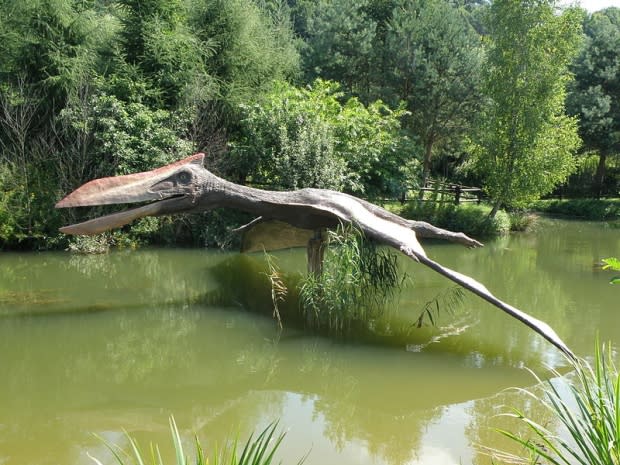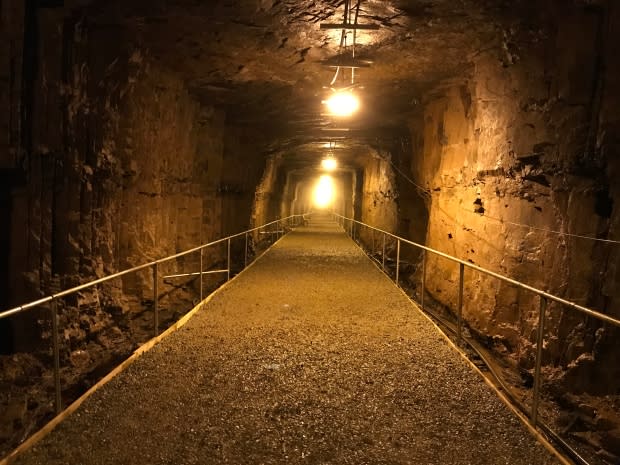A pterosaur in the iron ore? A century later, this Bell Island legend lives on
It's a tale that has captivated imaginations on Bell Island for more than 100 years, passed down through generations but impossible to verify.
It all started back in 1904, so the story goes. Miners were drilling and blasting, constructing a tunnel in an iron ore mine.
That's when they spotted it, practically under their feet.
"It was a fossil and it was of a pterodactyl," said Bonnie Spracklin, a tour guide at the Bell Island Heritage Society.
Spracklin said the specimen was more than 8 metres long. The miners dug it out of the ground and laid the pieces on the floor of a parish hall.
Evidence lost
From there, the fossil soon disappeared. Its whereabouts remain a mystery 115 years later.
"I've heard several stories," Spracklin said, "whether they're true or not I cannot tell you."
Some Bell Islanders believe the fossil is buried under what is now a bakery, the tour guide explained. Others believe that miners tossed it over a cliff, fearing that a paleontological investigation would shut down the mine and leave them jobless.

Despite any physical evidence, the legend lingers, bolstered in part by the late Reverend John Hammond of Bell Island, who wrote about the pterodactyl in one of his many historical tomes, Spracklin said.
Perhaps unsurprisingly, there are no known photos of the finding, according to the heritage society's executive director, Teresita McCarthy.
Not so fast
"I strongly doubt that they found [a pterodactyl] but since we can't actually see it, there's no definitive answer," said paleontologist Doug Boyce.
The rocks make up Bell Island were formed some 270 million years before pterodactyls existed, Boyce explained.

"The only chance for a pterodactyl to be found is if there was some crevice or ravine and it fell into it, but I doubt that's the case."
McCarthy suggests that is precisely what happened. In fact, in her re-telling of the story, the pterodactyl had a broken wing, perhaps the result of falling for the sky, or becoming wedged between rocks.
Pterodactyl vs. trilobite
While Boyce is quite certain those miners didn't find a pterodactyl, he says the specimen likely was a fossil.
His best guess is that trilobites are responsible.

The ancient arthropods, which look a little like modern woodlice, otherwise known in Newfoundland and Labrador as carpenters, left tracks as they burrowed through the earth on Bell Island, Boyce explained.
Those tracks are known as trace fossils.
"Bell Island is world famous for its trace fossils and I'm thinking that it might possibly have been a fortuitous alignment of different trails or burrows, so it might have looked like bone material."
McCarthy is undeterred, but good-natured toward detractors.
"We say it's a pterodactyl," she laughed. "That's our story and we're sticking to it."
Read more stories from CBC Newfoundland and Labrador


